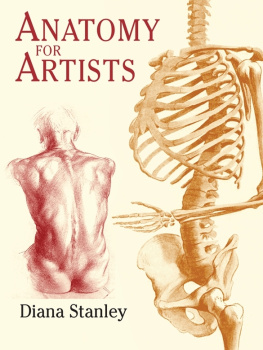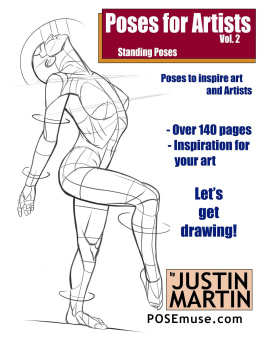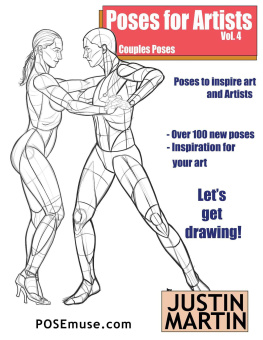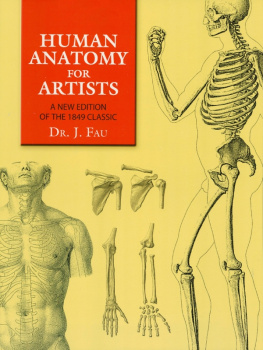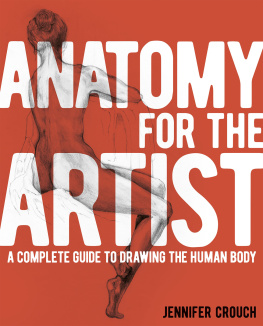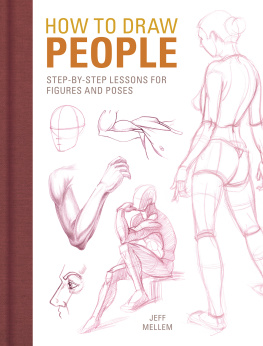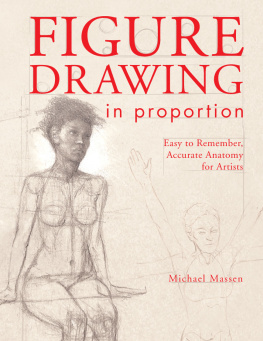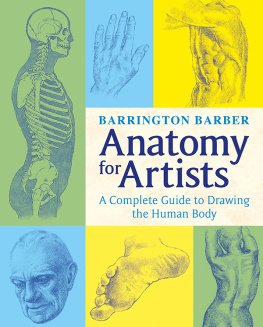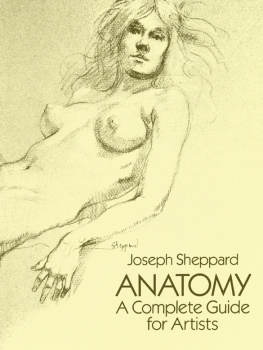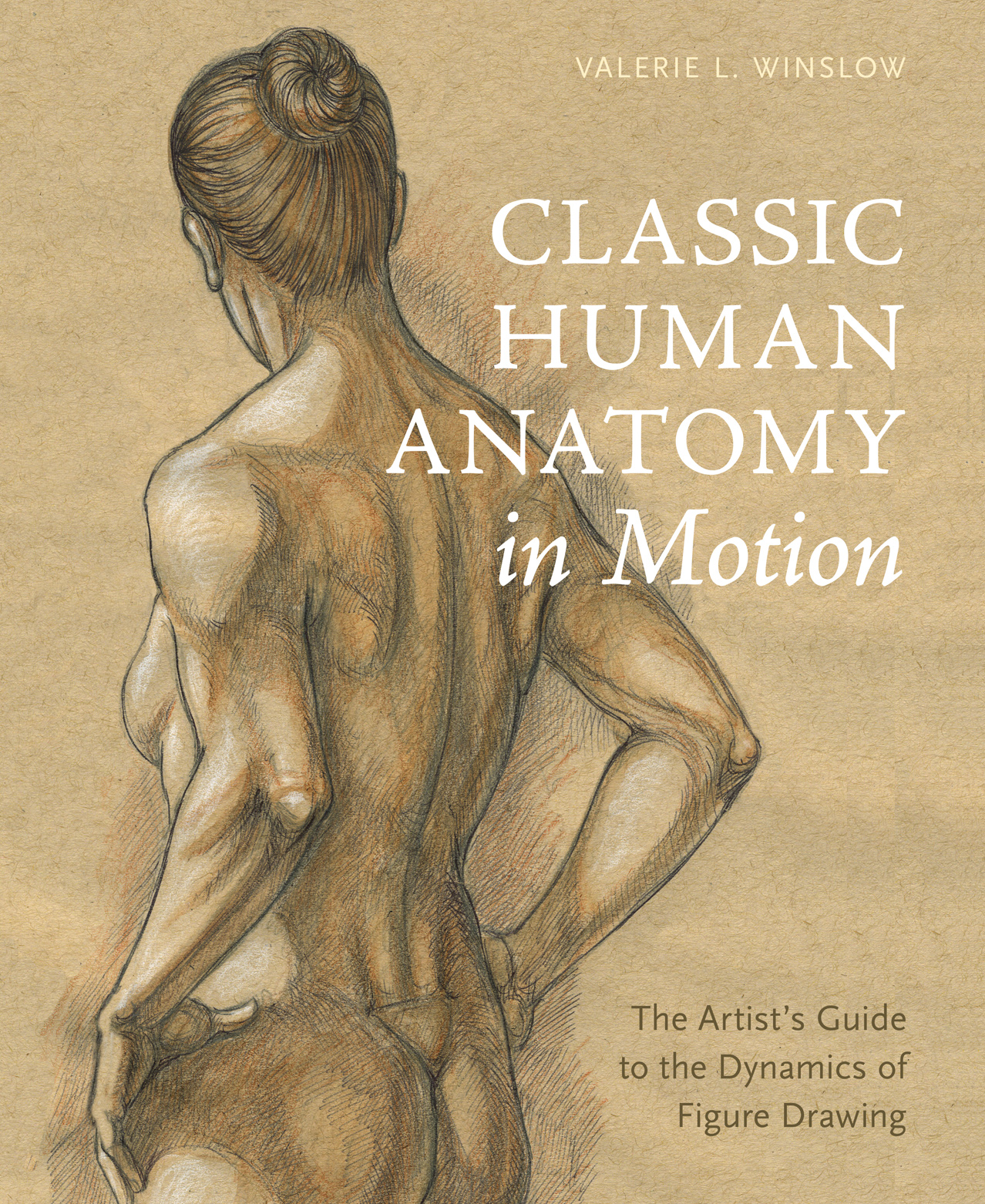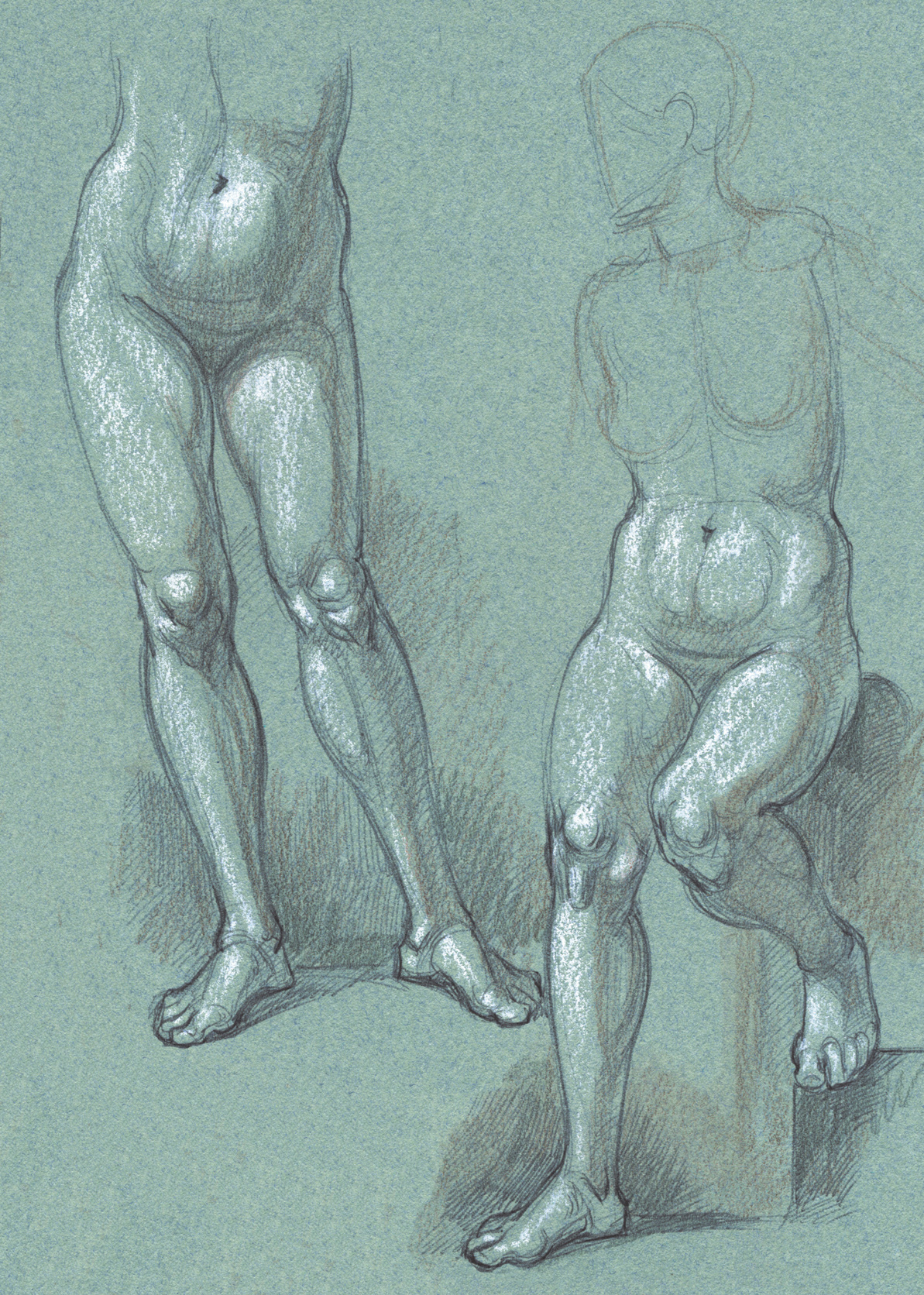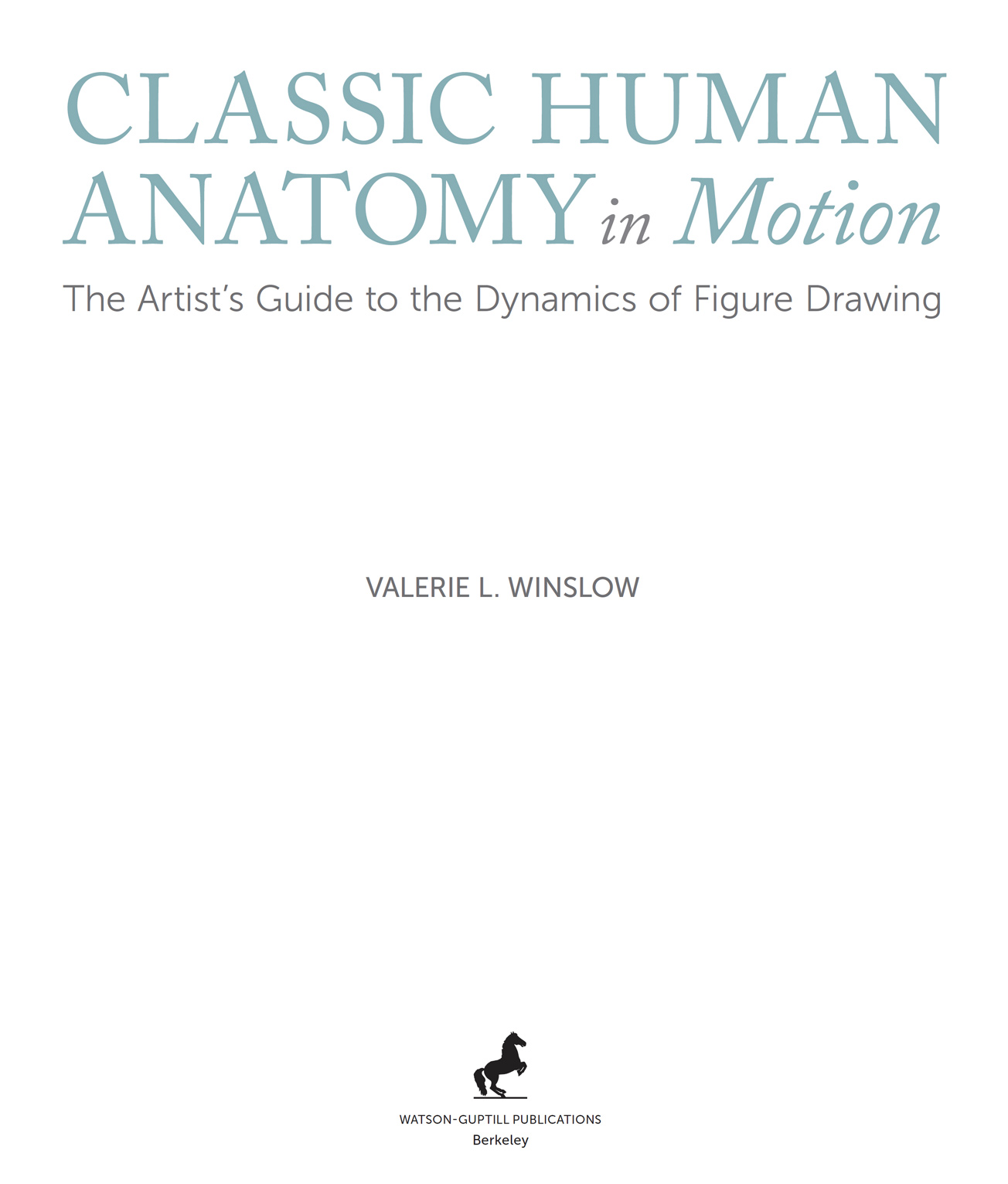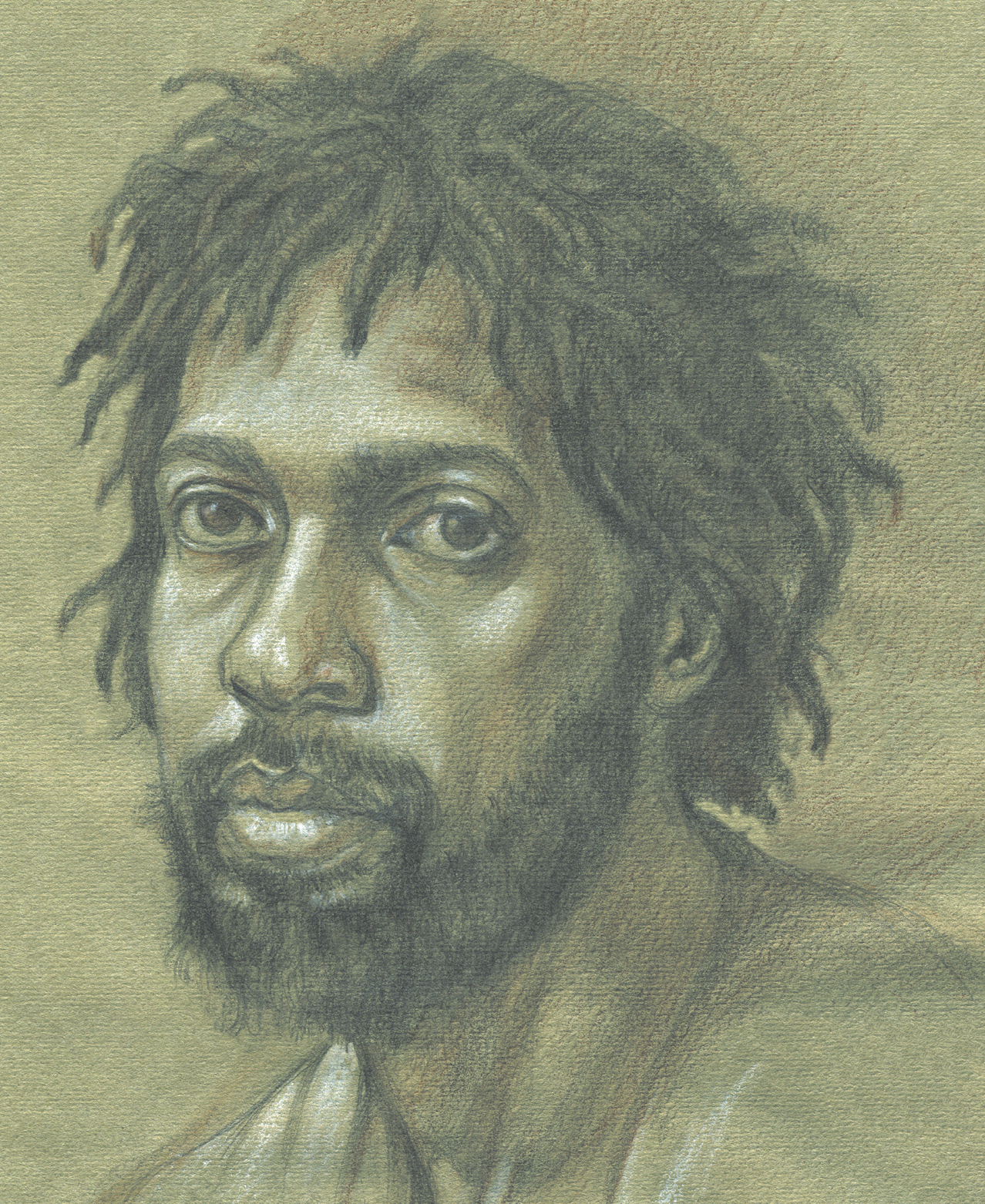STUDY OF TWO PAIR OF LEGS
Ballpoint pen, colored pencil, white chalk on toned paper.
Copyright 2015 by Valerie L. Winslow
All rights reserved.
Published in the United States by Watson-Guptill Publications, an imprint of the Crown Publishing Group, a division of Random House LLC, a Penguin Random House Company, New York.
www.crownpublishing.com
www.watsonguptill.com
WATSON-GUPTILL and the WG and Horse designs are registered trademarks of Random House LLC
Library of Congress Cataloging-in-Publication Data
Winslow, Valerie L.
Classic human anatomy in motion : the artists guide to the dynamics of
figure drawing / Valerie L. Winslow.First Edition.
pages cm
1. Anatomy, Artistic. 2. Figure drawingTechnique. 3. Motion in art.
I. Title.
NC760.W535 2015
743.49dc23
2014027715
Hardcover ISBN: 978-0-7704-3414-4
eBook ISBN: 978-0-7704-3415-1
Cover design by Chloe Rawlins
Interior Design by Happenstance Type-O-Rama
v3.1
CONTENTS
STUDY OF OTEINO AS A YOUNG MAN
Graphite pencil, colored pencil, white chalk on toned paper.
ACKNOWLEDGMENTS
I wish to express my sincerest thanks to many people whose professional service, advice, friendship, and never-ending support helped get me through the long and grueling days I spent on this book for nearly four years.
First and foremost, I express my deepest gratitude to my project editor, James Waller. With his incredible editorial skills, gentle wit, and sharp hawk eyes for the smallest of details, he took an overloaded manuscript and condensed it into one with a cohesive continuity.
I would also like to extend my sincere appreciation to the people at Watson-Guptill Publications (Ten Speed Press) who were so essential to getting this book published: editorial director Julie Bennett, senior editor Lisa Westmoreland, designers Chloe Rawlins and Maureen Forys, associate manager of publicity Natalie Mulford, and editorial assistant Ali Slagle.
I also want to express my heartfelt thanks to the following people: Ward Abronski; Cynthia Mohr Anderson; Rob Anderson; John Asaro; Sonia Belliveau; Kelsey Beyer; attorney M. J. Bo Bogatin; Veronique Bohne; Andrew Brennan; Lisa Buch; Andrew Cawrse; Ben Chrisler; Annie Cilley; Victoria Craven; Roy Flores; Sandy Frank; Grace Fua; Carol Peek Griffin; Joshua D. Hammer, DMD; Steve Jacobsen; Owen Kahn; Thomas Kennedy; Kirk Kwiatkowski; Gregory Longfellow; Annamarie Nelson, fine arts coordinator for online education, AAU; Dr. Craig Nelson, director of the Undergraduate School of Fine Arts and codirector of the Graduate School of Fine Art, AAU; Nhi Nguyen; Linda Nichols; Carol A. Nunnelly; Mia Paschal; Leila Porteous; Pam Powell; Suzanne Ramsey; Candace Raney, retired senior editor at Watson-Guptill; Dr. Gary D. Richards, associate professor, Department of Biomedical Sciences, University of the Pacific, San Francisco; Ronnie A. Roche; Dr. Phyliss Senter; Theresa Shugue; Dr. Elisa Stephens, president of the Academy of Art University; Dr. Richard A. Stephens, chairman emeritus of the Academy of Art University; Jason Strevens; Tomutsu Takishima; Dean Taylor; Walter Thompson III; Claudio Tudisco; Joshua Utay, MEd, CPO; Oteino Vumapile; Cameron Wasson; Caleb Whitebeck; Lanie Wieland; Don Wolfe; Joy von Wollfersdorff; and Tendai Wutawunashe, as well as to all the students Ive had the pleasure of teaching over the past thirty-five years.
PREFACE
From the beginning of my artistic pursuits, Ive always felt strongly that the study of anatomy is vital for understanding the human figure. This was the main reason I was attracted to artistic anatomythough I admit that I was also eager to take on the challenge of learning such a difficult subject. But as a teacher of figurative art, I realize that many artists are intimidated by anatomys sometimes overwhelming complexity. And so I feel the responsibility to pass on to others the knowledge that I have gained, and to present the anatomical material in an accurate yet easy-to-understand format accessible to any artist who needs or wants the information. That was the motive for writing my first book, Classic Human Anatomy, and it remains the motive for this new book, Classic Human Anatomy in Motion.
The English philosopher Francis Bacon said, Knowledge is power, and thats certainly true for artists: Understanding something well gives an artist more power to create what he or she wants to create. Over the years, Ive often known figurative artists who wanted to take their art in certain creative directions but who kept hitting a dead end because they didnt really understand the basic anatomical elements of the human form. Then, when they acquired this knowledgeto whatever degree they felt was sufficienttheir figurative work was transformed. For an artist, anatomical knowledge shouldnt be an end in itself. Instead, it should inspire and enhance an artists creative work. When artists take the guesswork out of anatomy and truly understand the bodys structures and mechanisms, they can open up to a more intuitive level when solving certain problems in their figurative work.
Back when I was starting my art training, it was hard to find a course in artistic anatomy. Anatomy classes had been phased out of most art school and art department curriculums in the United States. The change started in the mid-twentieth century, when abstract expressionism and then pop art, conceptualism, and minimalism became the primary focus in art schools, replacing older artistic traditions. Yes, there were still ateliers that offered anatomy classes, but very few. I myself was scoffed at by teachers and other artists for trying to obtain knowledge of anatomy. They told me the subject was antiquated, too complicated, no longer necessary, and that I was wasting my time pursuing such an outdated topic.
This hostile attitude, however, ignited a rebellious desire on my part, and I continued, as best I could, to study the human figure in the classical way. I began collecting as many artistic and medical anatomy books as I could find, and I started a rigorous routine of reading the material and passionately drawing from live models to make all that information come alive in my work. I found that understanding the dynamics of form, structure, and movement gave my drawings and paintings an aesthetic edge. I wasnt just reporting bio-mechanical information; I was using that information to enhance my art and take it to another level.


